Great Northeast Blizzards of 2015
A blizzard is a violent storm with heavy snowfall and powerful winds. A blizzard forms when three conditions are met: When there is cold air near the ground, when there is moisture or water vapor in the air, and when a layer of warm air rises over the cold air. This combination produces powerful snow bursts, blowing snow, sub-freezing temperatures, and very dangerous conditions if you are outside or in your car. When the moisture is produced from a lake (such as one of the great lakes) it is called lake-effect snow. A recent lake-effect blizzard in western New York paralyzed the area with over six feet of snow in some places. A ground blizzard is a type of blizzard in which snow is not actually falling, but rather strong winds blow snow on the ground that has already fallen. The National Weather Service designates a blizzard when the storm has sustained wind gusts of 35 miles per hour, visibility must be reduced to 0.25 miles or less, and the storm must last at least three hours. In the United States, blizzards are most common in the high mountains, northern Great Plains, Great Lakes region, and New England and upstate New York. The Great Blizzard of 1888
Children in Brooklyn, New York after the blizzard The Great Blizzard of 1888 devastated parts of New York, Connecticut, New Jersey, and Rhode Island and Massachusetts between March 11 and March 14 of 1888. In some locales, the blizzard dumped five feet of snow and produced snow drifts up to 50 feet high. Drifts were so high in Saratoga Springs, New York, that they completely covered three-story houses. The storm was so powerful that it completely paralyzed the Northeast for days, as mail service, railroads, and telegraph communications were suspended. Even the New York Stock Exchange was closed for two days. Over 400 people died from the snow and the ensuing cold, 200 of which died in New York City, where daytime temperatures hovered in the single digits. Nor' easterA Nor' easter is a large winter storm that occurs along the northeastern coast of the United States and the east coast of Canada. Similar to a hurricane, winds from blow onto land from a northeast direction in the ocean. Depending on the temperature, a nor'easter can produce pounding rains or blizzard conditions and cause coastal erosion, flooding, damaging winds, and rouge waves. |
||
Click on a link below to learn all about a weather event, watch videos, and much more! |
||
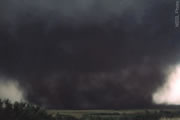 |
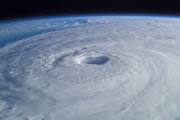 |
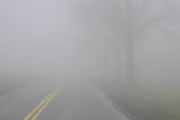 |
 |
 |
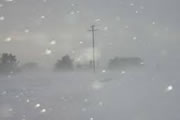 |
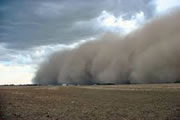 |
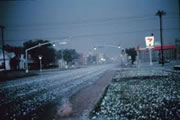 |
 |
